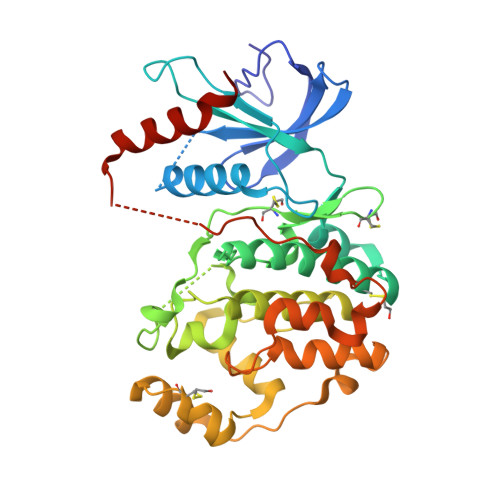Combining `dry' co-crystallization and in situ diffraction to facilitate ligand screening by X-ray crystallography.
Gelin, M., Delfosse, V., Allemand, F., Hoh, F., Sallaz-Damaz, Y., Pirocchi, M., Bourguet, W., Ferrer, J.L., Labesse, G., Guichou, J.F.(2015) Acta Crystallogr D Biol Crystallogr 71: 1777-1787
- PubMed: 26249358
- DOI: https://doi.org/10.1107/S1399004715010342
- Primary Citation of Related Structures:
3RDC, 4XLD, 4XN6, 4XNC, 4XNE, 4XOY, 4XOZ, 4XP0, 4XP2, 4XP3, 4XRJ, 4XRL, 4ZSC, 4ZSD - PubMed Abstract:
X-ray crystallography is an established technique for ligand screening in fragment-based drug-design projects, but the required manual handling steps - soaking crystals with ligand and the subsequent harvesting - are tedious and limit the throughput of the process. Here, an alternative approach is reported: crystallization plates are pre-coated with potential binders prior to protein crystallization and X-ray diffraction is performed directly 'in situ' (or in-plate). Its performance is demonstrated on distinct and relevant therapeutic targets currently being studied for ligand screening by X-ray crystallography using either a bending-magnet beamline or a rotating-anode generator. The possibility of using DMSO stock solutions of the ligands to be coated opens up a route to screening most chemical libraries.
Organizational Affiliation:
CNRS, UMR5048 - Université de Montpellier, Centre de Biochimie Structurale, 34090 Montpellier, France.

















